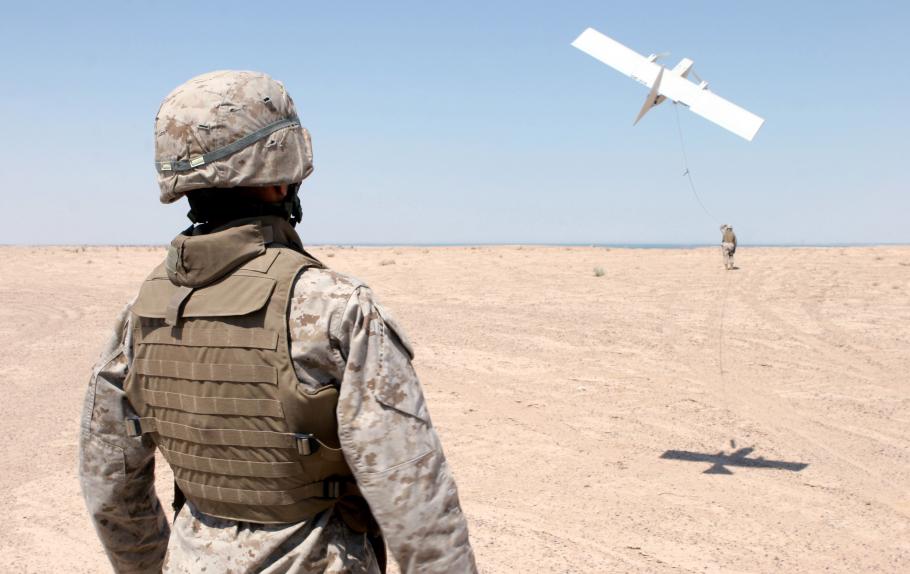AeroVironment RQ-14A Dragon Eye
Dragon Eye is a fully autonomous, hand- or bungee-launched mini-UAV designed to provide tactical reconnaissance and surveillance information to field commanders. The aircraft's extremely quiet electric motor and small wingspan make it difficult to detect in flight. Its sensors can record real-time, high-resolution color or infrared images. A Dragon Eye system consists of three of the UAVs and their ground control equipment, all of which are light and compact enough to be carried in a Marine's backpack.
The Naval Research Laboratory and the Marine Corps Warfighting Laboratory designed and built the Dragon Eye in 2001. It was first used operationally during Operation Iraqi Freedom in 2003 for reconnaissance and battle damage assessment. The Third Marine Division flew this Dragon Eye in Afghanistan in 2005. They used it for surveillance in the Nangarhar and Kunar provinces, the city of Jalalabad, and the Korengal Valley.
Display Status
This object is not on display at the National Air and Space Museum. It is either on loan or in storage.
Object Details
Date
2003
Country of Origin
United States of America
Type
CRAFT-Aircraft
Physical Description
A portable, tactical aerial vehicle assembled on the battlefield and operated to provide "over-the-next-hill" reconnaissance information to the battlefield commander. Powered by two small battery-powered motors, the Dragon Eye can remain airborne for approximately one hour. This combat worn vehicle continued to fly after a bullet hole was repaired with epoxy filler and silver duct tape was affixed to hold antennae in place and strengthen weakening joints.
Dimensions
3-D: 96.5 × 120.6 × 43.2cm, 2.7kg (3 ft. 2 in. × 3 ft. 11 1/2 in. × 1 ft. 5 in., 5.9lb.)
Materials
Carbon fiber, plastic, aluminum, copper, plastic, rubber, paint, styrofoam
Inventory Number
A20070211000
Credit Line
Transferred from the Marine Corps System Command
Data Source
National Air and Space Museum
Restrictions & Rights
Usage conditions apply
For more information, visit the Smithsonians Terms of Use.


